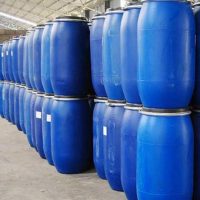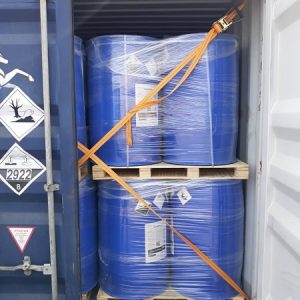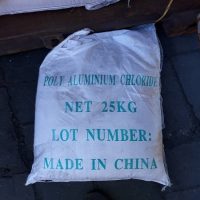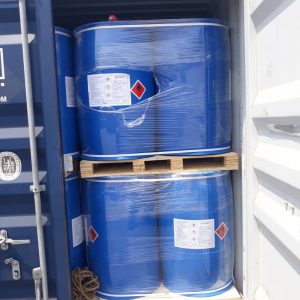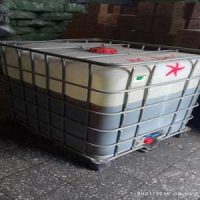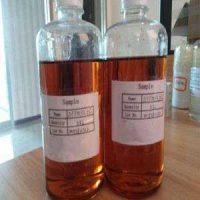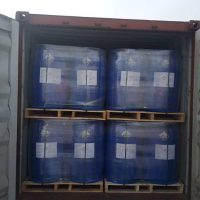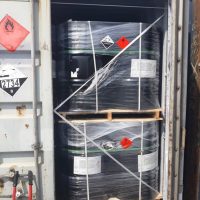buy Phosphonobutane Tricarboxylic Acid | Phosphonobutane (PBTC)
- CAS Number: 37971-36
- Appearance: Liquid
- Purity:50%
- Made in: China
- Phone Num : +86-2150591759
- E-mail: info@shanghaimetex.com
download COA here
- Description
- Analysis
- shipping and delivery
Description
Phosphonobutane Tricarboxylic Acid (PBTC) belongs to the family of phosphonates, which is used in cooling water systems as an inhibitor of corrosion and fouling. Phosphonates are phosphorous organic compounds in which carbon binds to phosphorus and phosphorus to oxygen.

This compound can be used in cases of high temperature, high hardness, high alkalinity, and high concentration index.
Physical and Chemical Properties:
This chemical in standard conditions is yellowish in appearance, but it is also available in powder form. the water-soluble form of this phosphonate is also common. PBTC is an excellent stabilizer for zinc salts. It is widely used in water systems, oil fields as a scale and corrosion inhibitor, suitable for composites with zinc salt and copolymer.
For more information on the physical and chemical properties of this material, see the table below:
| Chemical formula | C7H11O9P |
| Molecular Weight(g/mol) | 270.13 |
| Appearance | Liquid |
| Density (g/cm3) | 1.27-1.30 |
| Water Solubility | Completely miscible with water |
| Boiling point (°C) | 545.2±60 |
| Other names | 2-PHOSPHONOBUTANE-1,2,4-TRICARBOXYLIC ACID,
1,2,4-Butanetricarboxylic acid, 2-phosphono, PBTC, 2-Phosphono-1,2,4-butanetricarboxylic acid |
| Chemical Structure Depiction |  |
Applications and Uses of PBTC:
Phosphono-butane has many applications in various industries due to its properties and characteristics. One of the most important uses of this material is its use in industrial units that deal with water. It is an anti-corrosion and anti-scaling agent.
It is also one of the chelating agents of metals and prevents their corrosion and is used to clean metals. Its derivatives include esters, anhydrides, acyl halides, amides, and nitriles used in agriculture, pesticides, and fungicides, in the cosmetics industry, in hair dye, as well as in food flavorings, and in the pharmaceutical industry.
PBTC in Water Treatment:
One of the most important applications of this material is in water treatment. PBTC is used as an anti-corrosion and antiscalant in industrial units. Water used in cooling systems and other industrial equipment contains hardening agents and impurities such as calcium carbonate and copper ions. These impurities cause many problems, including sedimentation in pipes and other water-dealing pathways, as well as corrosion in the system.
in water cooling systems used for this purpose, it encounters different temperatures and pressures along the way. These changes cause deposits of calcium and other substances in the system. Which is highly harmful and reduces the efficiency of equipment thus increasing the cost of repairs and operation. Generally, they are one of the best sediment controllers in phosphonate material equipment.
Amino-trimethylene phosphonic acid (ATMP) and Etidronic acid (HEDP) also have this capability, but there are two barriers to using these substances: Limitations in the solubility of their salts and their low resistance to oxidizing agents.

Anti-corrosion and Antiscalant:
This material is a very strong anti-corrosion and anti-fouling and is used in many industries. Due to the higher strength of this substance compared to other phosphonate compounds, this substance is more economical than other antiscalants used in industry. It is used to control calcium carbonate. By preventing the reaction of metal ions, phosphonate prevents their unwanted reaction and the production of stable compounds. This material can be used in environments with very high hardness, temperature, and high alkalinity. In addition to using this material in irrigation systems in agricultural industries and for the production of fertilizers and herbicides can also be used.
Safety Information:
Eye contact with this substance can cause a lot of damage to the eye.
Inhalation of this substance can cause acute respiratory problems.
Contact with this substance with the skin causes damage to the skin.
It is necessary to carefully read its datasheet before using and working with this material in order to observe safety.
First-aid measures:
Eye Contact: Flush with water for at least 15 minutes. If irritation occurs and persists, obtain medical attention.
Skin Contact: Remove contaminated clothing and thoroughly wash with soap and water
Inhalation: Remove to fresh air. If breathing difficulty or discomfort occurs and persists, obtain medical attention.
Ingestion: If conscious, rinse your mouth with water. Dilute by giving 1 or 2 glasses of water. Do not induce vomiting.
Packing and Storage:
PBTC in a tightly closed container, stored in a cool, dry, ventilated area. Protect against physical damage. Avoid storage on wood floors. Also, Containers of PBTC may be hazardous when empty since they retain product residues.
Analysis



